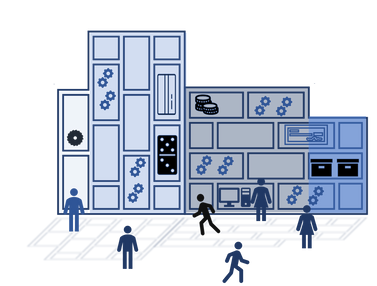Background
I teach a full-stack AI course at the University of Oxford. By 'full-stack,' I mean that the course covers Cloud, Edge, and MLOps practices within the context of machine learning and deep learning algorithms. We have been working with the Microsoft Azure team and the Microsoft Education team for this course over the years. Undoubtedly, the vast scope of the course makes it a complex technical undertaking. It is also not easy to teach this subject because it is a rapidly evolving domain. One such overarching technology evolution is the deployment of 5G networks.
In this post, I explain how we are using Microsoft LEARN to teach concepts of 5G. I hope the wider edtech community can benefit from our experience. I also welcome your feedback, especially if you plan to teach 5G from an Enterprise perspective.
The impact of 5G
Over the last 40 years, mobile networks have evolved in parallel to the internet. The next evolution of the mobile network (5G) is more than 100 times faster than the existing networks (4G / LTE). However, 5G is more than faster networks. It represents a fundamental change in architecture.
Through the deployment of 5g technologies, the capabilities of mobile networks and the internet are converging. Azure developers can now create innovative applications by leveraging the new capabilities of 5G networks. 5G networks represent a fundamental change in architecture. They empower Enterprise Azure developers to create low latency, high-bandwidth applications.
The combination of 5G and Azure provides value to the enterprises in a variety of ways. For example, you can create end-to-end 5G services for high bandwidth, low latency applications such as IoT Edge applications for high sensor density. You could also deploy live video analytics, which depends on low latency. All these services can be developed using familiar Azure tools.
Typically, you deploy new 5G based services as a partnership between an enterprise, a network operator, and a systems integrator.
We developed the Deploy 5G services with Azure learning path from the perspective of Azure developers. In this learning path, we explored the capabilities of 5G technologies for enterprises and the new services that can be enabled through 5G.
Here, we explored questions such as:
- How can Azure developers take advantage of the new features of 5G to create compelling enterprise applications leveraging their existing knowledge?
- How can Azure developers create network-aware applications that provide more than simple connectivity?
- How can they simplify their application development process by using low-code tools?
- How can they use a single dashboard view for on-premises and cloud-based deployments?
- What technology choices and trade-offs do Azure developers for 5G need to make?
- How can enterprises and mobile network operators leverage the unique capabilities of fusion core and APNS (Affirmed private network service) – which are based on the Metaswitch and Affirmed networks acquisitions?
The learning path includes the following modules:
- Introduction to 5G for Azure in the Enterprise
- 5G business models for Azure cloud technologies in enterprise
- Enterprise 5G technologies for Azure Cloud Services
- Introduction to Azure Sphere for industrial IoT connectivity
The role of scenario-driven learning in teaching 5G for the Enterprise
As you see from the above, 5G impacts many areas. In developing this module, the scenario-driven approach in LEARN was beneficial. From a teaching standpoint, scenarios have many benefits for teaching complex subjects
- Scenarios help unify complex ideas as a single theme(story) which learners can relate to.
- Scenarios abstract the complexity of the subject (in this case, 5G for the Enterprise) and first present a big picture. Then, you can explore deeper and also tie all aspects of the problem statement to the scenario.
- Scenarios present real-life situations
- Scenarios can be tied to specific skills.
- Through knowledge checks, skill acquisition can be evaluated
- Scenarios aid lifelong learning. In our case, learners already have some background (ex: for Edge, AI, Telecoms, etc.). Using scenarios, we can build on top of that knowledge base to provide new skills.
Scenarios for learning Enterprise 5G
So, how do we apply these ideas to learn 5G?
For the module Introduction to 5G for Azure in the Enterprise, which is part of the learning path Deploy 5G services with Azure, we chose a scenario around 3D warehousing for managing a fleet of autonomous robots. In this scenario, traditional connectivity modes such as Wi-Fi do not work due to the requirement of low latency and high sensor density. While the scenario itself is complex (3D warehousing), it helps to bring together many ideas which can be woven together as a story to explain complex ideas
To conclude, the set of modules in the learning path for deploying 5G services in the Enterprise help to upskill readers in a simple but effective manner by using the mechanism of scenarios.
I welcome your comments and feedback.
Posted at https://sl.advdat.com/3gR8M1L

